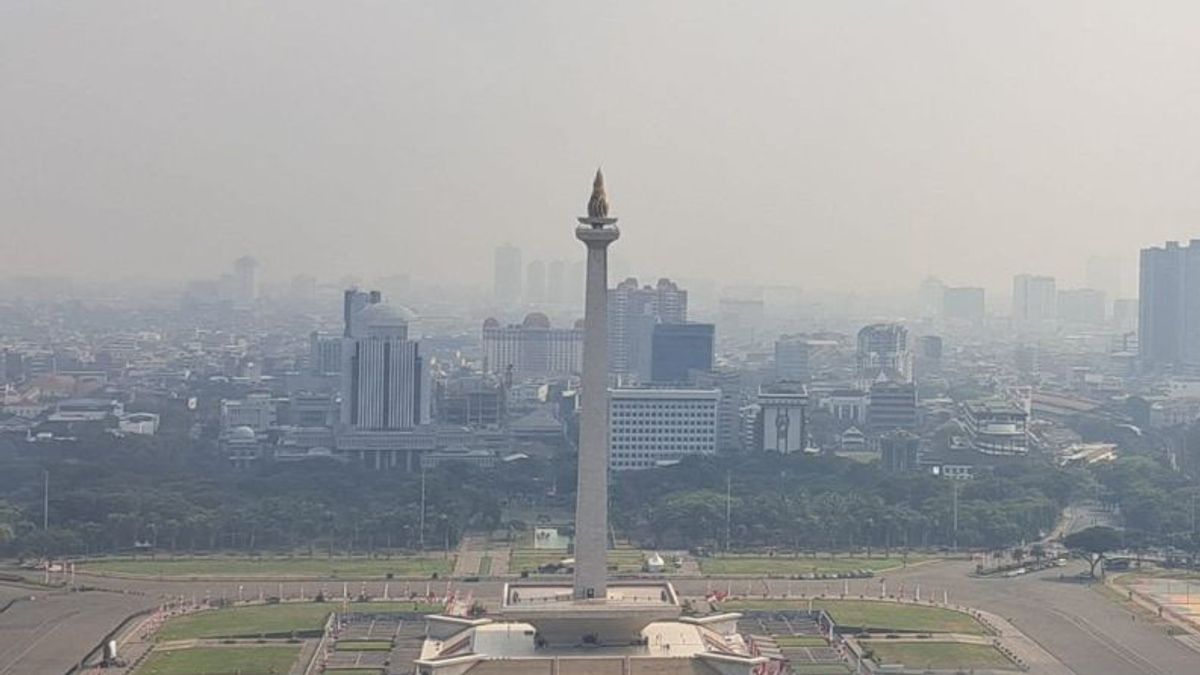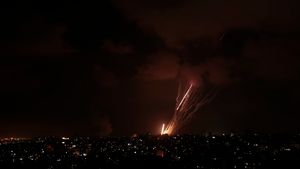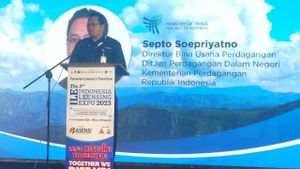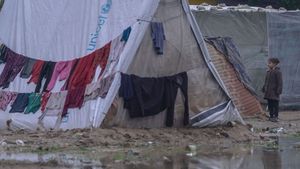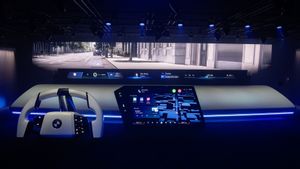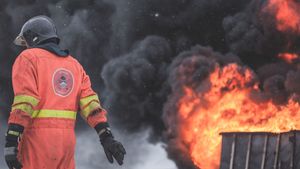JAKARTA - Air quality in DKI Jakarta is categorized as unhealthy because the number of fine particles (Particulate Matter / PM) 2.5 is based on the Air Pollution Standard Index (ISPU) at 101-199 on Thursday morning until 06.00 WIB.
The official website of the Environmental Information and Hygiene Service (DLH) of DKI Jakarta Province said that in five areas, Lubang Buaya (East Jakarta) had a PM2.5 figure of 113.
This figure has an explanation of the level of air quality that is detrimental to humans or groups of animals that are sensitive or can cause damage to plants or aesthetic values.
While the category is good, namely the level of air quality that does not have an effect on human or animal health and does not affect plants, buildings or aesthetic values with a PM2.5 range of 0-50.
Then, the category is very unhealthy with a PM2.5 range of 200-299 or its air quality can be detrimental to health in a number of segments of the exposed population. Finally, it is dangerous (300-500) or in general its air quality can harm the population's serious health.
Apart from East Jakarta, other ISPUs in the city of Jakarta are monitored moderately, namely the HI Roundabout in Central Jakarta (85), Kelapa Gading in North Jakarta (87), Jagakarsa in South Jakarta (79) and Kebon Jeruk in West Jakarta (69).
Meanwhile, on the IQ Air monitoring site, Thursday, at 06.32 WIB, Jakarta, it is classified as the number four city with the highest air pollution in the world with a score of 176.
For the number one polluted city, namely Delhi, India (199), the second is Lahore, Pakistan (183), the third is Kolkata, India (1977) and the fifth is Dhaka, Bangladesh (171).
SEE ALSO:
The Air Quality Index (IKU) in Jakarta is high because the current PM2.5 concentration is 20.6 times higher than the air quality guide value of the world health organization (WHO).
Air quality data was obtained based on monitoring at 20 monitoring stations, including on the Permai Screen (PIK), Jalan Raya Perjuangan (Kebon Jeruk) and Jimbaran (Ancol).
The English, Chinese, Japanese, Arabic, and French versions are automatically generated by the AI. So there may still be inaccuracies in translating, please always see Indonesian as our main language. (system supported by DigitalSiber.id)
